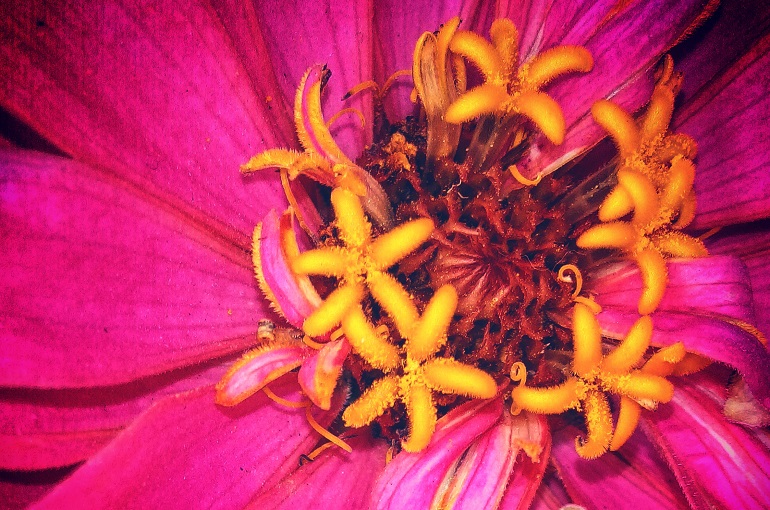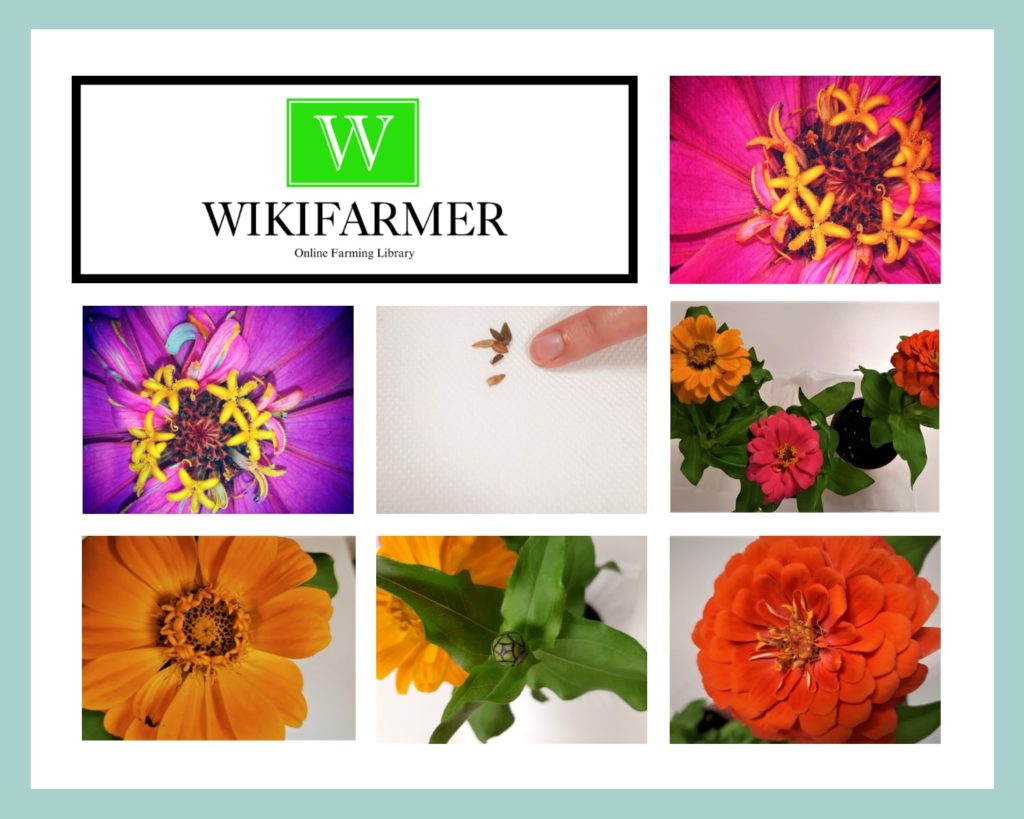How to grow Zinnia

This post is also available in:
This post is also available in:
![]() Español (Spanish)
Español (Spanish) ![]() Français (French)
Français (French) ![]() Deutsch (German)
Deutsch (German) ![]() Nederlands (Dutch)
Nederlands (Dutch) ![]() हिन्दी (Hindi)
हिन्दी (Hindi) ![]() العربية (Arabic)
العربية (Arabic) ![]() Türkçe (Turkish)
Türkçe (Turkish) ![]() 简体中文 (Chinese (Simplified))
简体中文 (Chinese (Simplified)) ![]() Русский (Russian)
Русский (Russian) ![]() Italiano (Italian)
Italiano (Italian) ![]() Ελληνικά (Greek)
Ελληνικά (Greek) ![]() Português (Portuguese (Brazil))
Português (Portuguese (Brazil)) ![]() Indonesia (Indonesian)
Indonesia (Indonesian) ![]() 한국어 (Korean)
한국어 (Korean)
Zinnia is a very resilient and adaptable plant. It is one of the easiest ways to give color to our garden. Zinnia flowers come in a wide range of types and cultivars. They grow best in a moist, fertile, well-drained soil in full sun. In general, the plants prefer temperatures from 23°C to 29°C (74 to 84 degrees °F). They prefer long and warm summers, while they dislike sudden weather changes and cold drafts. The soil pH shall be between 5.5 and 7.5. If you add compost in the soil, the flowers will grow faster. You can seek advice from a licensed agronomist after conducting a soil analysis.
How to grow Zinnia from Seed
For commercial uses, Zinnias are mostly propagated by seed (sexual propagation). Zinnias are generally very easy to start from seed. We can sow Zinnia seeds at the surface and then add just a small layer of soil so that the seeds are not directly exposed to sunlight. We can sow them, as soon as the soil is warm enough and there is no chance of frost. In many cases, you will already see some small Zinnia seedlings in just 10 – 14 days (depending on the variety), with flowers blooming in just a few more weeks. We can also grow Zinnias indoors, by seeding about 4 – 6 weeks before our last frost date.
How to transplant Zinnias seedlings.
If you want to transplant the plants from seedling trays, keep in mind that the soil needs to be warm enough, with a soil temperature of 21-26°C (70-80°F). We shall not transplant too early in the spring, nor too late, otherwise plants will suffer. The flowering or blooming season of Zinnia plant begins from late spring and ends at autumn (before the first frost). Zinnia plants grow fast and will normally bloom six to eight weeks after they are seeded. It is better to choose a sunny spot in our garden. Zinnias prefer to grow in large containers. You can choose a pot of at least 30cm (12 inches) for better results. Tall varieties, like State Fair, need the largest pots.
Pinching and Deadheading
If we simply want to make the plant look bushier and have more flowers, we can just pinch some stems and throw away the cutting. This technique is called pinching. The more we pinch, the more zinnia will grow back and regenerate. We may prune the stem over the first true leaves so that the plant does not waste its energy into producing new plant material that we are going to cut off. We can pinch off the stem with a special scissors.
The purpose of every plant is to produce seeds and thus reproduce. Zinnia plant is genetically set to produce seeds at a certain stage of its biological cycle. However, if we let zinnia flowers produce seeds, the plants will devote all of their energy in the seed setting procedure, and thus they will stop flowering. Consequently, if we want to extend the plants’ blooming period, we will have to remove every plant part that contains immature seeds. This procedure is called deadheading, and most gardeners perform these two procedures (pinching and deadheading) at one session.
Irrigation of Zinnia – Watering
Most Zinnia plants come from Equatorial regions and this is why some varieties are more drought tolerant. Regardless of how well they can do in dry soil conditions, they can always benefit and produce even more flowers if supplemental water is provided. As a general rule, we can water Zinnia flowers 2-3 times a week, as soon as we notice that the soil is completely dry.
Moreover, we shall irrigate Zinnias at the soil surface and not on their leaves. In this way, we keep the foliage dry and we reduce the risk of disease spread. Most gardeners irrigate their zinnias early in the morning. If we water them during the evening, the foliage will stay wet and will be more vulnerable to fungal infections. After the Zinnias have reached a height of 6-8 inches (15-20cm), we can add 3inch (8cm) of mulch around them, so as to control water evaporation. Mulch also helps in preserving soil moisture and blocks the unwanted weeds that compete with Zinnias for water, sunlight, and nutrients.
Harvest – Storage of Zinnia seed
Zinnia seed production will result in a rapid decrease of flowering. However, if we indeed want to collect Zinnia seeds, we can do it very easily. First, we have to stop deadheading the plant, in order to allow the flower produce seeds. Then, we may use paper bags (so that they absorb moisture) to collect the seeds. Simply, we may clip the flowers and gently rub them between our fingers, so that the seeds will fall in our paper bag. After we collect them, we can spread them in shallow cases or some paper indoors, for a couple of weeks, to allow them to dry out completely.
Pests in Zinnia Plants
Unfortunately, zinnias occasionally suffer from insects. The most common insects that can attack Zinnias are Aphids, Thrips, and Whiteflies. We can easily spot insects that have attacked our zinnias. Just shake the plant and you will see a swarm of insects flying off. We can also check the underside of the leaf. If we see white spots or eggs, then Aphids or Whiteflies have probably attacked our plants. The best treatment in all cases is prevention. If that didn’t work, then you can make a homemade insecticide. We can add 35gr (1.2oz) of dish soap and 10gr (0.36oz) of alcohol in 1 liter (33.8oz) of water and mix it well. We can spray it in the morning wherever you see signs of Aphids, Thrips and Whiteflies. We may repeat every day for several days.
Diseases of Zinnia Plants
Fungi infections in Zinnia plants are actually more common than insect invasions. The most common fungi infections in Zinnias are Powdery Mildew and Alternaria leaf spot. Powdery Mildew, as the name suggests, causes white Powdery Mildew on the surface of old or new foliage. The infected leaves drop earlier than the healthy ones. Alternaria leaf spot causes reddish, brown and purple spots on the foliage.
The key to preserving the health and intense blooming of Zinnias is to build an unwelcoming environment for pests. Grow your Zinnia plants in the sun. Water regularly, but keep the soil well-drained to prevent insects from coming. Apply deadhead to Zinnias, in order to have healthy, vigorous and blooming plants. Remove any dead leaves or flowers. Also, remove any unwanted weeds that can attract various insects. If you have performed all these steps and your plants still suffer, you can seek advice from your local licensed agronomist.
References
- https://www.rhs.org.uk/Plants/199305/i-Zinnia-elegans-i-Dreamland-Red-(Dreamland-Series)/Details
- https://www.chicagobotanic.org/plantinfo/smart_gardener/zinnias_hardest_working_flower_summer_garden
- https://homeguides.sfgate.com/much-water-should-use-water-zinnias-75537.html
- http://hort.ufl.edu/floriculture/pdfs/crop_production/zinnia_ENHFL05-017.pdf
- https://ucanr.edu/sites/ucmgnapa/files/81929.pdf










































































